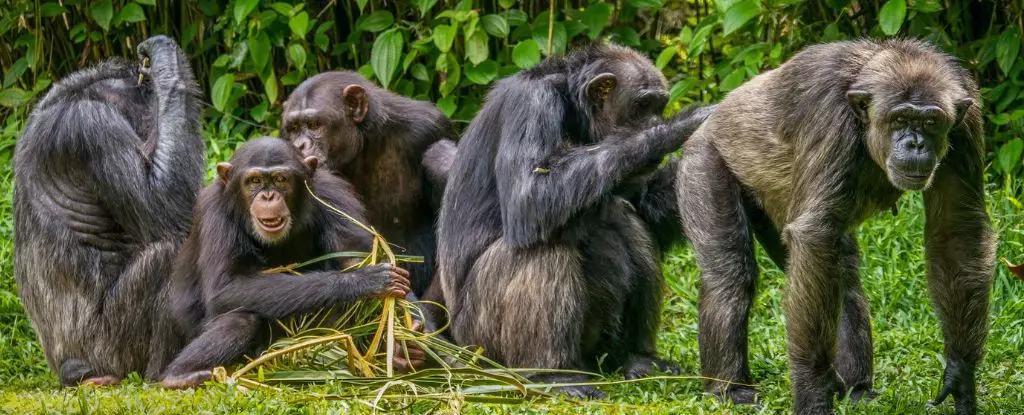Contagion is a fascinating phenomenon in social animals, often manifesting in behaviors that seem instinctively synchronized within groups. Recent research focusing on chimpanzees has unveiled a surprising behavior: synchronized urination. This study, which observes the actions of 20 captive chimpanzees, raises intriguing questions about the social dynamics at play—a behavior that, while seemingly mundane, could hold deeper evolutionary implications. This article delves into the research findings, exploring how social structures and relationships influence this unique form of behavioral contagion among our closest relatives in the animal kingdom.
Conducted at the Kumamoto Sanctuary in Japan, this research gathered extensive observational data over a total of 604 hours, examining four groups consisting of 16 male and 4 female chimpanzees. The primary aim was to discern whether chimpanzees exhibit a tendency to urinate synchronously and, if so, what social factors might be prompting such behavior. The research quantified occurrences of synchronized urination by tracking instances where individuals urinated within a 60-second window of each other. An important dimension of the study was the physical proximity of the chimps, noting that they were more likely to urinate simultaneously when situated within three meters or closer.
Examining the Influence of Social Rank
A noteworthy finding of the study suggested that social hierarchy plays a pivotal role in this contagious behavior. When a dominant chimpanzee initiated urination, individuals of lower rank were significantly more likely to follow suit. This revelation stands in contrast to the team’s initial hypothesis that social closeness—reflected in grooming behaviors—would dictate patterns of synchronized urination. Instead, the dominant hierarchy proved to be a more decisive factor. This aligns with notions of social influences in animal behavior, shedding light on how status and power dynamics might govern day-to-day activities, even those as basic as urination.
Implications for Understanding Group Cohesion
The implications of synchronized urination extend beyond mere physiological needs; they touch on the very fabric of community interactions. The study’s results suggest that such behaviors could contribute to group cohesion. In the context of chimpanzee communities, synchronized urination may reinforce social bonds or facilitate the strengthening of existing hierarchies. As primatologist Ena Onishi noted, these behaviors echo the way humans often navigate social norms around shared experiences, such as using bathrooms in groups. Such insights suggest that this unique form of signaling among chimpanzees may serve as an underlying mechanism for promoting harmony within a social structure.
The research opens doors to reevaluating our understanding of communication and social behaviors among primates. Drawing parallels with human social practices, it prompts an exploration of how evolutionary history may have favored such synchronized behaviors. The phenomenon of contagious yawning among social animals serves as a comparative backdrop, yet this study demonstrates a unique behavioral divergence governed instead by social rank rather than closeness. With further inquiries into this field, scientists can develop a richer comprehension of animal behaviors, potentially informing broader studies of evolutionary psychology.
The study of synchronized urination in chimpanzees presents a compelling glimpse into the intricacies of primate behavior. The findings underscore the importance of social structures in seemingly mundane actions and hint at deeper evolutionary roots. As researchers continue to investigate this phenomenon, not only do we gain insights into primate social systems, but we also reflect on the broader implications for understanding community dynamics in humans and other social species. The interconnectedness of toilet habits among chimpanzees might just reveal more about their social lives than initially meets the eye.



Leave a Reply